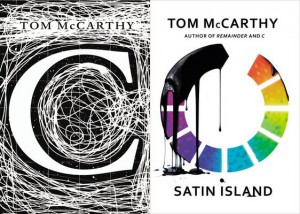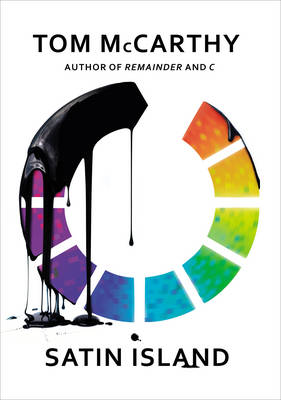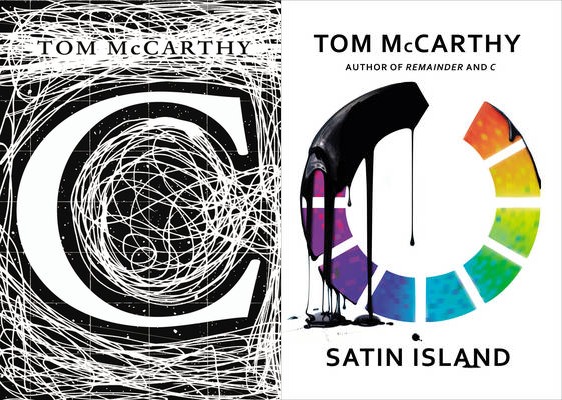Becky’s comment on my post from yesterday on the UK covers of C and Satin Island has made me realise that the ‘featured image’ I set for the top of each post doesn’t appear to email subscribers (or, presumably, in RSS readers). So the chances are that, unless you visited the site, you wouldn’t have seen what I was comparing. Here they are:

Next time I blog about book covers, I’ll remember to put them in the body of the post! Anyway, this post is about beginning to read Satin Island, so…
Tom McCarthy’s protagonist, U., is a ‘corporate anthropologist’, working for an unspecified company, analysing the threads of contemporary culture in order to produce the Great Report that will tie them all together to tell “the First and Last Word on our age.” Images of networks and their implied underlying patterns abound, from the pipes of the Company’s ventilation system to a parade of rollerbladers in Paris. Each paragraph of the novel is numbered like a business report, perhaps encouraging the reader to think that this text, this book, might be the Great Report itself. And McCarthy’s long, tumbling sentences create the feeling of being drawn into a web:
To a soundtrack, incongruous, of looped, recorded messages and chimes, a fruit-machine’s idle-tune, snatches of other people’s conversations and the staggered, intermittent hiss, quieter or louder, of steam-arms at espresso bars dotted about the terminal, a memory came to me: of free-wheeling down a hill as a child, riding my second bike.
But this is a Tom McCarthy novel, and the hints are already there from the beginning that the inner depths for which we may hope are just an illusion. In the first chapter, U. is waiting in the airport terminal, surrounded by screens – phones, computers, the rolling news channel which packages up bombing and oil spills alongside the sports highlights. It’s a whirlwind of a chapter that shows just how easily the most serious events can be turned into gleaming surface detail.
(More on that to follow…)
Book details (Foyles affiliate link)
Satin Island (2015) by Tom McCarthy, Jonathan Cape hardback
Like this:
Like Loading...




Recent Comments